Advent – Christmas Eve
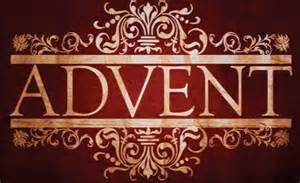 On Christmas Eve, the white center candle is traditionally lit. This candle is called the “Christ Candle” and represents the life of Christ that has come into the world. The color white represents purity. Christ is the sinless, spotless, pure Savior. Also, those who receive Christ as Savior are washed of their sins and made whiter than snow.
On Christmas Eve, the white center candle is traditionally lit. This candle is called the “Christ Candle” and represents the life of Christ that has come into the world. The color white represents purity. Christ is the sinless, spotless, pure Savior. Also, those who receive Christ as Savior are washed of their sins and made whiter than snow.
Let’s look at our scripture passages for Christmas Eve beginning with the letter to Titus, Titus 2:11-15 (NASB) . . .
11 For the grace of God has appeared, bringing salvation to all men,
12 instructing us to deny ungodliness and worldly desires and to live sensibly, righteously and godly in the present age,
13 looking for the blessed hope and the appearing of the glory of our great God and Savior, Christ Jesus,
14 who gave Himself for us to redeem us from every lawless deed, and to purify for Himself a people for His own possession, zealous for good deeds.
15 These things speak and exhort and reprove with all authority. Let no one disregard you.
Our Second passage is from the gospel according to Luke . . . Luke 2:1-14(NASB) . . . .
1 Now in those days a decree went out from Caesar Augustus, that a census be taken of all the inhabited earth.
2 This was the first census taken while Quirinius was governor of Syria.
3 And everyone was on his way to register for the census, each to his own city.
4 Joseph also went up from Galilee, from the city of Nazareth, to Judea, to the city of David which is called Bethlehem, because he was of the house and family of David,
5 in order to register along with Mary, who was engaged to him, and was with child.
6 While they were there, the days were completed for her to give birth.
7 And she gave birth to her firstborn son; and she wrapped Him in cloths, and laid Him in a manger, because there was no room for them in the inn.
8 In the same region there were some shepherds staying out in the fields and keeping watch over their flock by night.
9 And an angel of the Lord suddenly stood before them, and the glory of the Lord shone around them; and they were terribly frightened.
10 But the angel said to them, “Do not be afraid; for behold, I bring you good news of great joy which will be for all the people;
11 for today in the city of David there has been born for you a Savior, who is Christ the Lord.
12 This will be a sign for you: you will find a baby wrapped in cloths and lying in a manger.”
13 And suddenly there appeared with the angel a multitude of the heavenly host praising God and saying,
14 “Glory to God in the highest, And on earth peace among men with whom He is pleased.”
Tonight all candles are lit starting with the “Prophecy Candle” (purple), then the “Bethlehem Candle” (purple), Next is the “Shepherds’ Candle” (rose), then the “Angels’ Candle” (purple) and tonight the “Christ Candle” (white).
Let us pray . . . Father unto You be glory, honor and power, joy, peace, love and purity for only You have given us Christ the Lord Who is King and Shepherd, Savior and Lord. We thank You for Your graciousness and love, for the amazing sacrifice You make, in Jesus’ precious name, Amen.
The Fourth Sunday of Advent
 The fourth and last Sunday of Advent is for the celebration and representation of Peace. Let’s read our scripture passages, the first being from the first letter to the church of Corinth. 1 Corinthians 4:1-5 (NASB)
The fourth and last Sunday of Advent is for the celebration and representation of Peace. Let’s read our scripture passages, the first being from the first letter to the church of Corinth. 1 Corinthians 4:1-5 (NASB)
4 Let a man regard us in this manner, as servants of Christ and stewards of the mysteries of God.
2 In this case, moreover, it is required of stewards that one be found trustworthy.
3 But to me it is a very small thing that I may be examined by you, or by any human court; in fact, I do not even examine myself.
4 For I am conscious of nothing against myself, yet I am not by this acquitted; but the one who examines me is the Lord.
5 Therefore do not go on passing judgment before the time, but wait until the Lord comes who will both bring to light the things hidden in the darkness and disclose the motives of men’s hearts; and then each man’s praise will come to him from God.
Our second passage of scripture comes from the gospel according to Luke Chapter 3, verses 1-6 (NASB) . . . .
3 Now in the fifteenth year of the reign of Tiberius Caesar, when Pontius Pilate was governor of Judea, and Herod was tetrarch of Galilee, and his brother Philip was tetrarch of the region of Ituraea and Trachonitis, and Lysanias was tetrarch of Abilene,
2 in the high priesthood of Annas and Caiaphas, the word of God came to John, the son of Zacharias, in the wilderness.
3 And he came into all the district around the Jordan, preaching a baptism of repentance for the forgiveness of sins;
4 as it is written in the book of the words of Isaiah the prophet,
“The voice of one crying in the wilderness,
‘Make ready the way of the Lord,
Make His paths straight.
5‘Every ravine will be filled,
And every mountain and hill will be brought low;
The crooked will become straight,
And the rough roads smooth;
6And all flesh will see the salvation of God.’”
Today we light four candles, the “Prophecy Candle” (purple), the “Bethlehem Candle” (purple), the “Shepherd’s Candle” (rose) and the fourth and last purple candle, oftentimes called the “Angels Candle,” represents peace.
Let us pray, Father we thank You for bringing us through this time of preparation to receive Your Son, our Lord and Savior. What a magnificent gift You have given and are giving us when He returns to gather His brothers and sisters, Your children, Home to glory. Keep us ever mindful of the price You paid when He came to earth in human form, totally human, yet totally divine, in His precious name we pray, Amen.
The Third Sunday of Advent
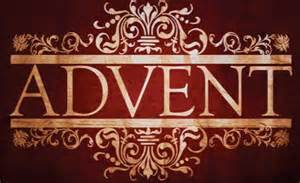 On the third Sunday of Advent we concentrate on joy. Lets look at our scripture passages. The first one in from the letter to the church at Philippi, Philippians 4:4-7 (NASB) . . .
On the third Sunday of Advent we concentrate on joy. Lets look at our scripture passages. The first one in from the letter to the church at Philippi, Philippians 4:4-7 (NASB) . . .
4 Rejoice in the Lord always; again I will say, rejoice!
5 Let your gentle spirit be known to all men. The Lord is near.
6 Be anxious for nothing, but in everything by prayer and supplication with thanksgiving let your requests be made known to God.
7 And the peace of God, which surpasses all comprehension, will guard your hearts and your minds in Christ Jesus.
Our second scripture passage is from the gospel of John 1:19-28 (NASB)
19 This is the testimony of John, when the Jews sent to him priests and Levites from Jerusalem to ask him, “Who are you?”
20 And he confessed and did not deny, but confessed, “I am not the Christ.”
21 They asked him, “What then? Are you Elijah?” And he *said, “I am not.” “Are you the Prophet?” And he answered, “No.”
22 Then they said to him, “Who are you, so that we may give an answer to those who sent us? What do you say about yourself?”
23 He said, “I am a voice of one crying in the wilderness, ‘Make straight the way of the Lord,’ as Isaiah the prophet said.”
24 Now they had been sent from the Pharisees.
They asked him, and said to him, “Why then are you baptizing, if you are not the Christ, nor Elijah, nor the Prophet?”
26 John answered them saying, “I baptize in water, but among you stands One whom you do not know.
It is He who comes after me, the thong of whose sandal I am not worthy to untie.”
These things took place in Bethany beyond the Jordan, where John was baptizing.
On the third Sunday of Advent the pink, or rose-colored candle is lit. This pink candle is customarily called the “Shepherds Candle” and it represents joy. Today we light three candles, the “Prophecy Candle” (purple); the “Bethlehem Candle” (purple) and todays is the pink or rose candle know as the “Shepherd’s Candle.”
Let us Pray . . . Father thank You for giving us time to prepare for the coming of Your Son. As we look forward to His birth, we also look forward to His coming again and thank You for our redemption through Christ our Lord, Amen.
The Second Sunday of Advent
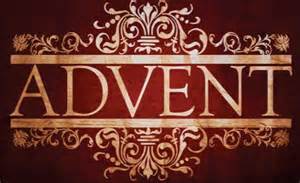 On the second Sunday of Advent, the second purple candle is lit. This candle typically represents love. Some traditions call this the “Bethlehem Candle,” symbolizing Christ’s manger. As we begin our Celebration of the Second Sunday of Advent, let’s join together and read from the letter to the Romans, chapter 15, verses 4-13 (NASB) . . .
On the second Sunday of Advent, the second purple candle is lit. This candle typically represents love. Some traditions call this the “Bethlehem Candle,” symbolizing Christ’s manger. As we begin our Celebration of the Second Sunday of Advent, let’s join together and read from the letter to the Romans, chapter 15, verses 4-13 (NASB) . . .
4 For whatever was written in earlier times was written for our instruction, so that through perseverance and the encouragement of the Scriptures we might have hope.
5 Now may the God who gives perseverance and encouragement grant you to be of the same mind with one another according to Christ Jesus,
6 so that with one accord you may with one voice glorify the God and Father of our Lord Jesus Christ.
7 Therefore, accept one another, just as Christ also accepted us to the glory of God.
8 For I say that Christ has become a servant to the circumcision on behalf of the truth of God to confirm the promises given to the fathers,
9 and for the Gentiles to glorify God for His mercy; as it is written,“Therefore I will give praise to You among the Gentiles,
And I will sing to Your name.”10 Again he says,
“Rejoice, O Gentiles, with His people.”
11 And again,
“Praise the Lord all you Gentiles,
And let all the peoples praise Him.”12 Again Isaiah says,
“There shall come the root of Jesse,
And He who arises to rule over the Gentiles,
In Him shall the Gentiles hope.”13 Now may the God of hope fill you with all joy and peace in believing, so that you will abound in hope by the power of the Holy Spirit.
Lets now read together from the gospel of Matthew. Matthew 11:2-10 (NASB)
2 Now when John, while imprisoned, heard of the works of Christ, he sent word by his disciples
3 and said to Him, “Are You the Expected One, or shall we look for someone else?”
4 Jesus answered and said to them, “Go and report to John what you hear and see:
5 the blind receive sight and the lame walk, the lepers are cleansed and the deaf hear, the dead are raised up, and the gospel preached to them.
6 And blessed is he who does not take offense at Me.”
7 As these men were going away, Jesus began to speak to the crowds about John, “What did you go out into the wilderness to see? A reed shaken by the wind?
Advent-wreath-wk2-m8 But what did you go out to see? A man dressed in soft clothing? Those who wear soft clothing are in kings’ palaces!
9 But what did you go out to see? A prophet? Yes, I tell you, and one who is more than a prophet.
This is the one about whom it is written, ‘Behold, I send My messenger Who will prepare Your way before You.’
Now let’s light the “Prophecy Candle” from week one and now the “Bethlehem Candle” for this week.
Let’s pray, Father we thank You for Who You are and for all the ways You show us Your love. Through the Prophets of old You gave us a promise and we see You have fulfilled it. We can therefore learn from this that Your word is tried and true. You will always keep Your promises. Thank You for showing us Your love as we prepare for the birth of our Lord, in Jesus’ name, Amen.
The First Sunday of Advent
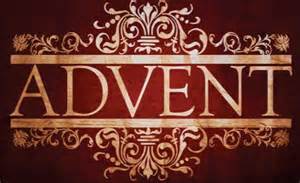 As we begin our Celebration of Advent, let us begin with a reading from the Epistle (Letter) to the Roman (church) . . . Romans 13:11-14 (NASB)
As we begin our Celebration of Advent, let us begin with a reading from the Epistle (Letter) to the Roman (church) . . . Romans 13:11-14 (NASB)
11 Do this, knowing the time, that it is already the hour for you to awaken from sleep; for now salvation is nearer to us than when we believed. 12The night is almost gone, and the day is near. Therefore let us lay aside the deeds of darkness and put on the armor of light. 13Let us behave properly as in the day, not in carousing and drunkenness, not in sexual promiscuity and sensuality, not in strife and jealousy. 14But put on the Lord Jesus Christ, and make no provision for the flesh in regard to its lusts.
Our second reading is from the book of the gospel of Luke, chapter 21:25-33 (NASB) . . .
25 “There will be signs in sun and moon and stars, and on the earth dismay among nations, in perplexity at the roaring of the sea and the waves, 26 men fainting from fear and the expectation of the things which are coming upon the world; for the powers of the heavens will be shaken. 27 Then they will see the Son of Man coming in a cloud with power and great glory. 28 But when these things begin to take place, straighten up and lift up your heads, because your redemption is drawing near.”
29 Then He told them a parable: Behold the fig tree and all the trees; 30 as soon as they put forth leaves, you see it and know for yourselves that summer is now near. 31 So you also, when you see these things happening, recognize that the kingdom of God is near. 32 Truly I say to you, this generation will not pass away until all things take place. 33 Heaven and earth will pass away, but My words will not pass away.
Let us light the first candle of Advent. This candle is typically called the “Prophecy Candle” in remembrance of the prophets, primarily Isaiah, who foretold the birth of Christ. This candle represents hope or expectation in anticipation of the coming Messiah. (Light the first Purple Candle)
Father we thank You that You love us enough to send us Your son for our redemption and new life. Prepare us for the day of Your coming again. In Jesus’ name, Amen.
Advent – What It Is, When It Is, and How It Is Celebrated
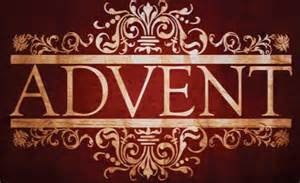 Celebrating Advent involves spending time in spiritual preparation for the coming of Jesus Christ at Christmas. In Western Christianity, the season of Advent begins on the fourth Sunday prior to Christmas Day, or the Sunday which falls closest to November 30, and lasts through Christmas Eve, or December 24. In 2014 it begins on Sunday 30 November and is celebrated each Sunday after that until it climaxes on 24 December.
Celebrating Advent involves spending time in spiritual preparation for the coming of Jesus Christ at Christmas. In Western Christianity, the season of Advent begins on the fourth Sunday prior to Christmas Day, or the Sunday which falls closest to November 30, and lasts through Christmas Eve, or December 24. In 2014 it begins on Sunday 30 November and is celebrated each Sunday after that until it climaxes on 24 December.
What is Advent?
Advent is a period of spiritual preparation in which many Christians make themselves ready for the coming, or birth of the Lord, Jesus Christ. Celebrating Advent typically involves a season of prayer, fasting and repentance, followed by anticipation, hope and joy.
Many Christians celebrate Advent not only by thanking God for Christ’s first coming to Earth as a baby, but also for his presence among us today through the Holy Spirit, and in preparation and anticipation of his final coming at the end of time.
Definition of Advent
The word “advent” comes from the Latin “adventus” meaning “arrival” or “coming,” particularly of something having great importance.
The Time of Advent
For denominations that celebrate Advent, it marks the beginning of the church year.
In Western Christianity, Advent begins on the fourth Sunday prior to Christmas Day, or the Sunday which falls closest to November 30, and lasts through Christmas Eve, or December 24. When Christmas Eve falls on a Sunday, it is the last or fourth Sunday of Advent.
For Eastern Orthodox churches which use the Julian calendar, Advent begins earlier, on November 15, and lasts 40 days rather than four weeks. Advent is also known as the Nativity Fast in Orthodox Christianity.
What Denominations Celebrate Advent?
Advent is primarily observed in Christian churches that follow an ecclesiastical calendar of liturgical seasons to determine feasts, memorials, fasts and holy days:
Catholic
Orthodox
Anglican / Episcopalian
Lutheran
Methodist
Presbyterian
Today, however, more and more Protestant and Evangelical Christians are recognizing the spiritual significance of Advent, and have begun to revive the spirit of the season through serious reflection, joyful expectation, and even through the observance of some of the traditional Advent customs.
Origins of Advent
According to the Catholic Encyclopedia, Advent began sometime after the 4th century as a time of preparation for Epiphany, and not in anticipation of Christmas. Epiphany celebrates the manifestation of Christ by remembering the visit of the wise men and, in some traditions, the Baptism of Jesus. At this time new Christians were baptized and received into the faith, and so the early church instituted a 40-day period of fasting and repentance.
Later, in the 6th century, St. Gregory the Great was the first to associate this season of Advent with the coming of Christ. Originally it was not the coming of the Christ-child that was anticipated, but rather, the Second Coming of Christ.
By the Middle Ages, the church had extended the celebration of Advent to include the coming of Christ through His birth in Bethlehem, his future coming at the end of time, and his presence among us through the promised Holy Spirit. Modern-day Advent services include symbolic customs related to all three of these “advents” of Christ.
Advent Symbols and Customs
Many different variations and interpretations of Advent customs exist today, depending upon the denomination and the type of service being observed. The following symbols and customs provide a general overview only, and do not represent an exhaustive resource for all Christian traditions.
Some Christians choose to incorporate Advent activities into their family holiday traditions, even when their church does not formally recognize a season of Advent. They do this as a way of keeping Christ at the center of their Christmas celebrations.
What Are the Colors of Advent?
Advent Colors and What They Symbolize
Purple has traditionally been the primary color of Advent, symbolizing repentance and fasting. Purple is also the color of royalty, demonstrating the anticipation and reception of the coming King celebrated during Advent. Today, however, many churches have begun to use blue instead of purple, as a means of distinguishing Advent from Lent.
Pink (or rose) is also one of the colors of Advent used during the third Sunday. It represents joy or rejoicing and reveals a shift in the season away from repentance and toward celebration.
White is the color of the center Advent candle, representing purity. Christ is the sinless, spotless, pure Savior. Also, those who receive Christ as Savior are washed of their sins and made whiter than snow.
Symbols and Customs of the Advent Wreath
The Advent wreath is a circular garland of evergreen branches representing eternity. On that wreath, five candles are typically arranged. During the season of Advent one candle on the wreath is lit each Sunday as a part of the Advent services. Each candle represents an aspect of the spiritual preparation for the coming of the Lord, Jesus Christ.
On the first Sunday of Advent, the first purple candle is lit. This candle is typically called the “Prophecy Candle” in remembrance of the prophets, primarily Isaiah, who foretold the birth of Christ. This candle represents hope or expectation in anticipation of the coming Messiah.
Each week on Sunday, an additional candle is lit. On the second Sunday of Advent, the second purple candle is lit. This candle typically represents love. Some traditions call this the Bethlehem Candle,” symbolizing Christ’s manger.
On the third Sunday of Advent the pink, or rose-colored candle is lit. This pink candle is customarily called the “Shepherds Candle” and it represents joy.
The fourth and last purple candle, oftentimes called the “Angels Candle,” represents peace and is lit on the fourth Sunday of Advent.
On Christmas Eve, the white center candle is traditionally lit. This candle is called the “Christ Candle” and represents the life of Christ that has come into the world. The color white represents purity. Christ is the sinless, spotless, pure Savior. Also, those who receive Christ as Savior are washed of their sins and made whiter than snow.
Celebrating with an Advent wreath during the weeks prior to Christmas is a great way for Christian families to keep Christ at the center of Christmas, and for parents to teach their children the true meaning of Christmas.
Have We Forgotten Our Heroes? Chapter 13
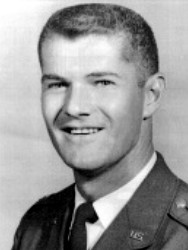 Name: Ronald Edward Storz
Name: Ronald Edward Storz
Branch/Rank: United States Air Force/O3
Date of Birth: 21 October 1933
Home City of Record: SOUTH OZONE PARK NY
Date of Loss: 28 April 1965
Country of Loss: North Vietnam
Status (in 1973): Prisoner of War/Died in Captivity
Category: 1
Aircraft/Vehicle/Ground: O1A
The following is QUOTED directly from THE PASSING OF THE NIGHT, by Brigadier Gen Robinson Risner, Copyright 1973, Ballantine Books. Pages 63 – 71.
“One day they replaced Shumaker with Air Force Captain Ron Storz. I tapped on the wall to him, got his name, and so forth. He said that up until this move, he had been living with Captain Scotty Morgan. “I leaned on the door and broke the lock. Now I am over here alone being punished.” Ron told me he had been shot down in an L 1 9, one of those little planes called grasshoppers. Since he, as a forward air controller, normally worked with Vietnamese ground forces, he would carry a Vietnamese officer in the back seat. His mission was to circle and spot enemy positions or helps the artillery batteries adjust for accuracy. “One afternoon I decided to go up and buzz around by myself. I was just looking the area over, and I circled real close to the Ben Hi River. I knew that was the seventeenth parallel, but I didn’t mean to get over the river. When I did, a Vietnamese gun got me, and tries as I might, I could not keep from crashing on the north side. I thought they were going to kill me when I got out of the airplane. They made me get down on my knees. One of the officers took my gun, cocked it and put it against my head. I figured I was a goner.” He had been in prison for some time and really wanted to talk. I could hear him moving around in the other cell. He hollered out the back vent as Bob before him had done, but I could never understand him. We tapped on the wall, but it was too slow and unsatisfactory.
There were a lot of things we wanted to tell each other. Finally he asked, by tapping, “Have you tried boring a hole through the wall yet?” I told him I had tried several places but could not get through. “Each time I try, I hit a brick after I’ve gone in maybe eight to twelve inches.” I had several partial holes; in fact, the wall looked like a piece of Swiss cheese. “Well, I’ll try, too.” Pretty soon I heard some scraping and grinding. By that afternoon he was through. His hands were blistered, but he had made it. That gave me some incentive to try to go through the other wall. I really went to work, and I punched through there, too. We passed our tools through and let them work in the next room. In a few days, every room was connected up and down the hall.
Once we got the holes bored through, Ron said, “I’m really down in the mouth.” I asked what the matter was. “Well, just the fact that I have nothing. They have taken everything away from me. They took my shoes, my flying suit, and everything I possessed. They even took my glasses. I don’t have a single thing. They took everything.” Ron had indicated to me that he planned to become a minister when he got back to America. Consequently we talked about religion quite a bit, as all of us did. When he said he was depressed because they had taken everything, I told him, “Ron, I don’t think we really have lost everything.” “What do you mean?” “According to the Bible, we are sons of God. Everything out there in the courtyard, all the buildings and the whole shooting match belong to God. Since we are children of God, you might say that all belongs to us, too.” There was a long pause. “Let me think about it, and I’ll call you back.” After a while he called back, “I really feel a lot better. In fact, every time I get to thinking about it, I have to laugh.” “What do you mean?” “I am just loaning it to them.” I will never forget the day he called me and told me, “They’re trying to make me come to attention for the guards and I will not do it. What do you think I ought to do?” “What do they do?” “They cut my legs with a bayonet, trying to make me put my feet together. I am just not going to do it.” I knew he meant it. He was an extremely strong man. I thought about it for a while, then I called back, “Ron, I’m afraid we don’t have the power to combat them by physical force. I believe I would reconsider. Then, if we decide differently, we all should resist simultaneously. With only you resisting while everybody else is doing it means you are bound to lose.” He said, “Okay.” I knew, though, that if I had said, “Ron, hang tough! Refuse to snap to,” he would have done it without batting an eye. He was just that kind of man and he proved it a short time later.
It happened after we had begun to set up a covert communications system throughout the Zoo. By means of the holes in the walls, special hiding places in the latrine and other ways, we could pass a message through the entire camp within two days. I had put out directives establishing committees and worked out a staff. Certain people had been assigned specific jobs. One man was heading up our communications section. We had a committee working on escape. And we kept a current list of all the POWs and their shoot-down date. I then decided to put out a bulletin. It was not too large, but it contained directives, policies and suggestions. Since Ron was next door to me, I dictated it to him, and he wrote it down. Despite the Vietnamese’s denying us our dues as POWs, I still felt that we could outsmart them by using tactics such as these. We had only been at the Zoo around four weeks; given time, I reasoned, we could begin to effect some changes. I could not have been more wrong. One day during this period, a guard came in and made me stand at attention with my back to the wall. In a few minutes the Dog came in with another Vietnamese in a white shirt. The Dog did not say who the civilian was, but he paid him a lot of deference. Using the Dog as an interpreter, the civilian made a statement: “I understand you are also a Korean hero.” I was still standing braced against the Wall. “That is military information and I cannot answer. I can give you only my name, rank, serial number and date of birth.” When he heard the translation, the cords in his neck swelled up and he tamed red in the face. “We know how to handle your kind. We are preparing for you now.” He turned and stomped out. The Dog came back in a little while. He was either so scared or mad that he was still trembling “You have made the gravest mistake in your life. You will really suffer for this.”
With that threat he left. A few days later a guard caught the men two cells above me talking through the hole in the wall to Ron. He also found some written material. Then he went into Ron’s room and caught him by surprise. He took two pieces of written work Ron had prepared; one was a list of all the POW names, the other was one of the bulletins I had put out. To make matters worse, Ron had put my real name on the newssheet instead of my code name, “Cochise.” While still in the cell, one of the guards began reading the two sheets. Ron reached over, snatched one and ate it while holding them off with one hand. Unfortunately he had grabbed the wrong one. He ate the list of names which was not too important, but they kept the list of directives. They also found the hole in the wall. This so excited them that they stepped out in the hall yelling for reinforcements. While they were out, Ron ran over to my wall and beat out an emergency signal to come to our hole in the wall. They searched and found everything. I ate the list of names, but they got the policies. Get rid of anything you don’t want them to find.” I told him to deny everything, and I would do the same.
He just had time enough to stuff the plug back in the hole when they came and took him away. I passed the warning down to the other two rooms and they began to clean house. As fast as possible I began to try and dispose of anything incriminating. The steel rods that we had been using to bore the holes in the walls I put under the floor through the grate. I destroyed lots of paperwork, but the fat was in the fire. A big shakedown was on. One thing I had not destroyed was a sheet of toilet paper that had the Morse code on it. I didn’t think it was any big deal or I would have gotten rid of it. This was one of the pieces of evidence they would use to accuse me of running a communications system. The irony of it was that I actually was relearning the Morse code with the knowledge of my turnkey. He had even written his name on it for me.
They put Ron in another room for three days and nights without anything at all – no food, water, bedding, blankets or mosquito net. They just shoved him in and left him there. He not only got cold, but the mosquitoes chewed on him all night. They took me before the camp commander for interrogation. He had the piece of paper Ron had not been able to destroy and started reading the fourteen items it listed, such as: gather all string, nails and wire; save whatever soap or medicine you get; familiarize yourself with any possible escape routes; become acquainted with the guards, and in general follow the policy that “you can catch more flies with sugar than, with vinegar.” I denied the paper was mine. “Storz has already admitted everything and said you were responsible.” I knew that was a lie.
They would have had to kill Ron before he did that. He might admit to his having done it, but he would never say that somebody else had. They, of course, told him the same thing and said that I had admitted everything, and all he had to do was confirm it. After making the usual number of threats, they took me back to a different room at the end of the building. They left me a pencil and paper and told me to write out a confession that I had violated prison rules. “If you do not, you will be severely punished.” The first thing I knew, I heard a tap. It was Ron Storz in the next room. We exchanged what had happened in interrogation. I said, “Remember, I’ll never confess to anything.” “Roger, I won’t either.” He then tapped, “God bless you.” I sent back a GBU. I later heard that Ron was put in Alcatraz, a harsh punishment camp. Though he was an extremely strong man, the torture began to get through to him. The North Vietnamese hated him so that even when they moved out all the other POWs, they left Ron there alone. I later saw one of the postage stamps put out by the North Vietnamese. It was typical North Vietnamese propaganda. On it is a picture of an American POW. He is big and tall. Behind him is a teen-age girl, very small, holding a rifle on him. The American was Ron Storz. When making their report on the POWs in 1973, the North Vietnamese said that Ron Storz “died in captivity.” Ron Storz died as he lived – a brave American fighting man who considered his principles more valuable than his life.”
Ron Storz was beaten unconscious and died on 23 April 1970. His remains were recovered and returned on March 6, 1974.
![Advent+-+First+Sunday-003[1]](https://caseymac1944.files.wordpress.com/2014/08/advent-firstsunday-0031.jpg?w=620)
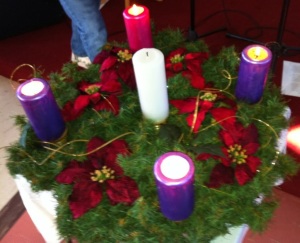

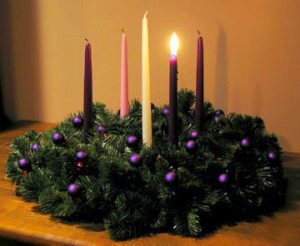
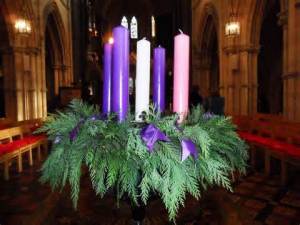

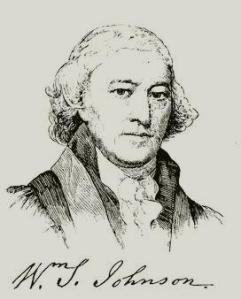
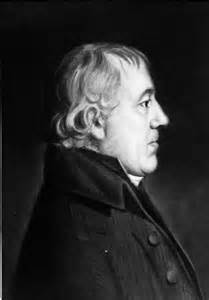
Recent Comments